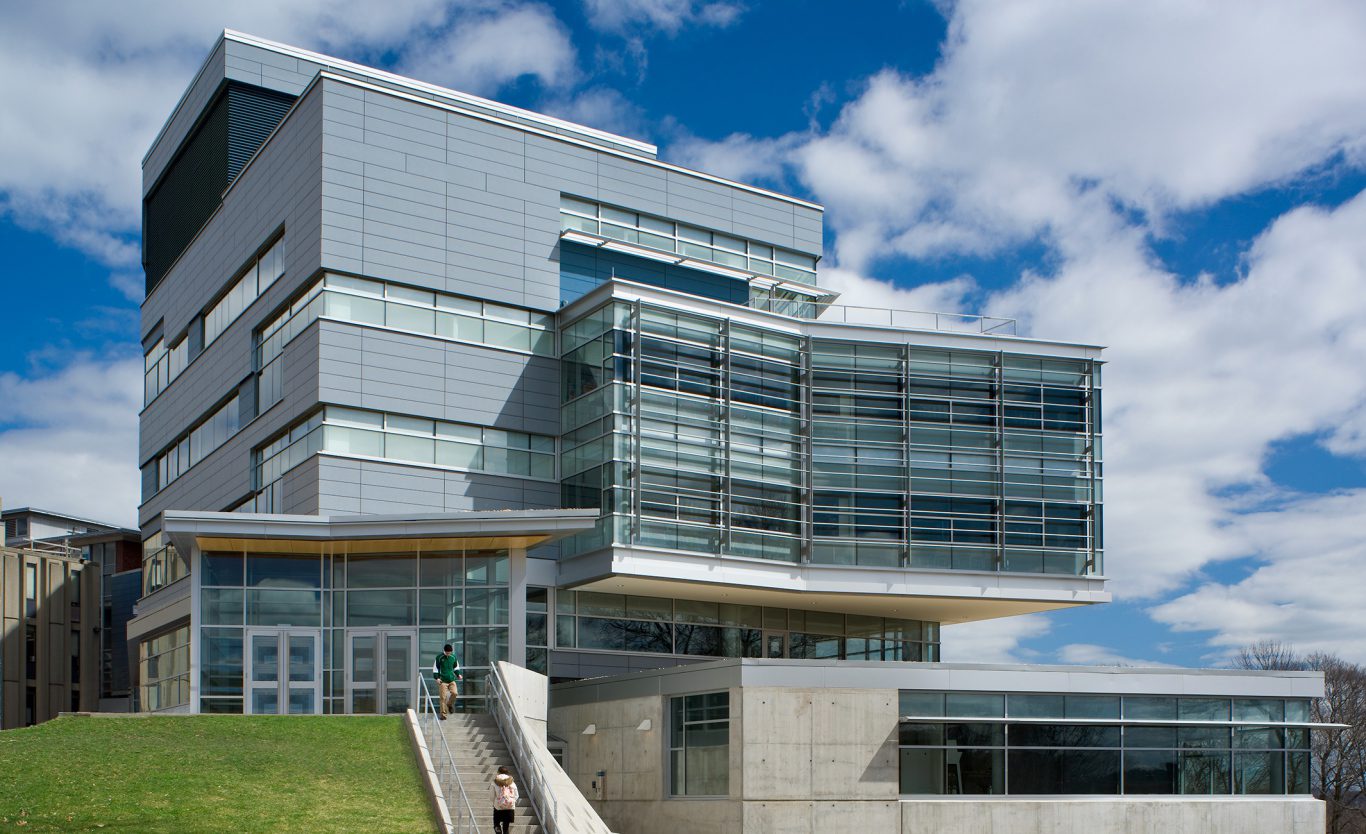
Over six departments, 12 research groups, dozens of teaching faculty, and countless ancillary support spaces are impacted, improved, relocated, or re-tooled as a product of the ambitious planning effort that was undertaken in the design and planning of the Carl J. Shapiro Science Center at Brandeis University. Catalogues of existing space and equipment needs, future growth projections, dozens of end-user meetings and recurring senior administration reviews were discussed, analyzed, and synthesized as part of a 16-month programming and planning process.
 Diagrammatic plans summarized existing conditions and mylar overlays were used to demonstrate multiple options of multiple transformations of programs and adjacencies over time. The team also used loose “program puzzle pieces” to allow researchers to actively participate in the planning process.
Diagrammatic plans summarized existing conditions and mylar overlays were used to demonstrate multiple options of multiple transformations of programs and adjacencies over time. The team also used loose “program puzzle pieces” to allow researchers to actively participate in the planning process.
Staff, faculty, and researchers were interviewed in their current spaces as a means to assess and understand current conditions, configurations and frustrations. Sophisticated techniques of thermal and CFD modeling and sunshade studies were utilized to better understand the current and future environments.
 The implementation of the project was complex: new construction was syncopated with demolition and rehabilitation in a systematic and resolved manner. Double-moves were minimized to achieve a desired end-state with minimal disruption to ongoing activities. This approach was based on the integrated, yet complementary effect of implementing large-scale enhancements while maintaining the many individual personalities of the complex.
The implementation of the project was complex: new construction was syncopated with demolition and rehabilitation in a systematic and resolved manner. Double-moves were minimized to achieve a desired end-state with minimal disruption to ongoing activities. This approach was based on the integrated, yet complementary effect of implementing large-scale enhancements while maintaining the many individual personalities of the complex.
The planning process for the new Brandies Science Center offers a case study in the full range of scalar planning. The effort was at once singularly focused on the improved conditions of connections – both external and internal – while still achieving a depth of development required to discern potential conflicts and test large-scale visions. It is this ability to “zoom” in and out at different scales while maintaining a campus focus that is the sine qua non of this process and leads directly to reconnecting the “science block” to the broader campus community.

